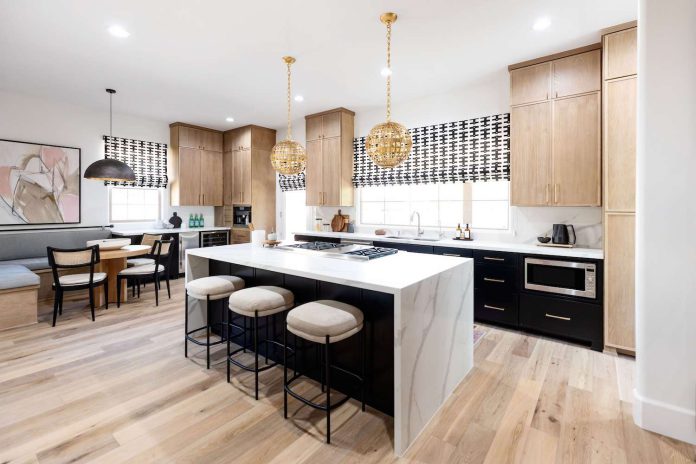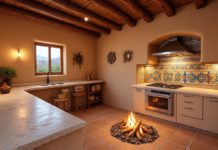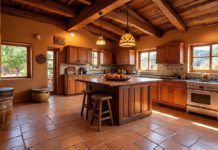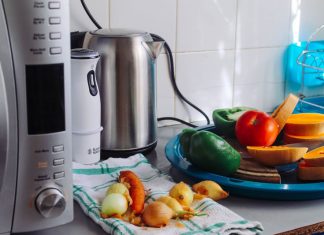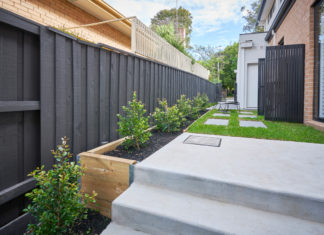When choosing the right material for your kitchen cabinets, oak is often a top contender. Known for its timeless beauty, durability, and versatility, oak has been a staple in kitchens for generations. But how does it compare to other hardwood options like maple, walnut, and cherry? In this article, we’ll dive deep into a comprehensive comparison of oak kitchen cabinets against other popular hardwood choices based on key factors such as cost, durability, aesthetic appeal, maintenance, and environmental impact.
1. Cost Comparison
When it comes to kitchen cabinetry, cost is often one of the first factors that homeowners consider. Oak kitchen cabinets, as a hardwood, offers a balance between affordability and quality.
Oak Cabinets
Oak is relatively more affordable compared to some other hardwoods like walnut and cherry. On average, oak cabinets cost between $1500 and $4000, depending on the size of the kitchen and the style of cabinets you choose. It is a popular choice for those who want a high-quality, long-lasting option without breaking the bank. Additionally, oak is readily available, which also helps to keep the costs lower.
Other Hardwoods
- Maple: Maple is often a more affordable hardwood than oak, with prices typically ranging from $1000 to $3500 for cabinets. While maple’s durability and aesthetic appeal are comparable to oak, it is usually a bit softer, making it less ideal for heavy-duty kitchen use.
- Walnut: Walnut is a premium hardwood, known for its rich, dark color and luxurious appearance. However, it comes with a higher price tag. Walnut cabinets can cost anywhere from $4000 to $8000, depending on the size and customization. It’s best suited for homeowners looking for a high-end, sophisticated look.
- Cherry: Cherry is another luxurious wood that can be more expensive than oak, with prices ranging from $3000 to $6000. Cherry cabinets are known for their deep reddish-brown hues, which darken over time, adding character to the kitchen. However, cherry’s higher cost and softer nature make it less durable than oak in high-traffic kitchens.
Which Is Best for Budget-Conscious Homeowners?
For homeowners looking for the best value, oak kitchen cabinets strikes a perfect balance between affordability and durability. While other hardwoods like maple are slightly cheaper, they don’t offer the same level of durability and strength that oak provides. Walnut and cherry are certainly more luxurious, but their high cost makes oak the better option for those on a budget.
2. Durability and Longevity
oak kitchen cabinets is one of the most high-traffic areas in a home, and durability is crucial when selecting materials for cabinetry. Let’s see how oak measures up to other hardwoods in this category.
Oak Cabinets
Oak kitchen cabinets is a very durable hardwood known for its strength and resistance to wear and tear. Its dense composition helps it withstand daily use, from cooking splatters to the wear of constant opening and closing. Oak’s natural resilience to dents and scratches makes it an ideal choice for busy kitchens. Additionally, it is moisture-resistant, which is crucial in the kitchen environment where humidity levels can fluctuate.
Other Hardwoods
- Maple: While maple is quite strong, it is generally softer than oak, which makes it more susceptible to dents and scratches. Maple is more prone to damage, particularly in high-traffic kitchens. However, it is still durable and suitable for most residential kitchens.
- Walnut: Walnut is also a durable hardwood, known for its density. While it resists damage better than softer woods, it can be prone to scratching over time, especially due to its darker, softer grain. Walnut is still a good option for a luxury kitchen, but it may not be as practical as oak for families with children or high kitchen activity.
- Cherry: Cherry is a relatively soft hardwood compared to oak, and while it has a natural resistance to warping, it is more prone to dents, scratches, and wear. Its tendency to darken with age may also impact its overall appearance over time.
Which Is Best for High-Traffic Kitchens?
Oak kitchen cabinets stands out for its durability. It can withstand years of use and retains its appearance even with heavy wear and tear, making it the best option for busy kitchens. While walnut and maple offer decent durability, oak’s robustness ensures that it will hold up well for decades.
3. Aesthetic Appeal and Versatility
A kitchen’s aesthetic can make or break the design, and when it comes to aesthetics, oak offers a warm, inviting tone that suits various interior styles. But how does it compare with other hardwoods?
Oak Cabinets
Oak kitchen cabinets has a distinct, prominent grain that gives it a classic, timeless look. It is available in two main varieties: red oak, which has a warm reddish hue, and white oak, which is lighter and more neutral. White oak’s subtle grain makes it an excellent choice for modern and minimalist kitchens, while red oak’s stronger grain offers a rustic or traditional charm. Oak’s natural beauty makes it versatile enough to fit into both traditional and contemporary designs.
Other Hardwoods
- Maple: Maple has a fine, consistent grain pattern, which gives it a smooth and clean appearance. Its light color can complement modern or minimalist kitchen designs, but it may lack the character that oak provides. Maple is a good option for a more streamlined, understated look.
- Walnut: Walnut is a rich, dark wood with dramatic grain patterns. It’s often used for high-end, luxury kitchens, providing a sophisticated, elegant look. Walnut’s deep, luxurious tones create a bold contrast in kitchens with lighter elements.
- Cherry: Cherry wood is known for its reddish-brown tones, which deepen with age, giving it a rich, warm aesthetic. Cherry cabinets are perfect for traditional or vintage-style kitchens. However, as the wood darkens over time, it may not always maintain a consistent look.
Which Wood Is Best for Your Kitchen Style?
Oak’s versatility makes it an excellent choice for both traditional and contemporary kitchen designs. Its ability to complement various countertops, backsplashes, and flooring options makes it a go-to for many homeowners. Walnut, on the other hand, is ideal for those seeking a rich, luxurious look, while maple suits more minimalist or modern designs. Cherry is best for those who prefer a warm, classic aesthetic that evolves over time.
4. Maintenance and Care
No matter how durable your cabinets are, maintenance is key to ensuring they remain beautiful over time. Let’s look at the maintenance needs of oak compared to other hardwood options.
Oak Cabinets
Oak kitchen cabinets is low-maintenance and easy to care for. To keep it looking its best, regular dusting and cleaning with a soft cloth are essential. For stains and spills, use a mild cleaning solution to prevent damage to the wood’s finish. Oak’s natural resistance to moisture and its durability means that it requires less frequent refinishing compared to softer woods like maple and cherry.
Other Hardwoods
- Maple: Maple cabinets require more frequent cleaning due to their lighter color, which shows dirt and stains more easily. They may also need refinishing or re-staining more often than oak, especially in high-traffic kitchens.
- Walnut: Walnut cabinets require regular care to maintain their rich color. They are more prone to scratches, so regular polishing is needed to keep them looking pristine.
- Cherry: Cherry cabinets may need more attention to prevent fading or darkening over time. While the darkening is natural, it can be uneven, and care should be taken to preserve the wood’s aesthetic.
Which Wood Is Low Maintenance?
Oak kitchen cabinets is the clear winner for low-maintenance cabinetry. Its durability and resistance to wear and tear make it the easiest to maintain, especially in busy kitchens. While other hardwoods like walnut and cherry look beautiful, they require more care to maintain their appearance over time.
5. Environmental Considerations
Sustainability is becoming increasingly important when selecting materials for home renovations. Oak has an edge when it comes to environmentally friendly practices.
Oak as a Sustainable Choice
Oak is widely available and can be responsibly sourced from managed forests. Sustainable forestry practices ensure that oak remains a renewable resource, reducing environmental impact. Look for oak cabinets with FSC (Forest Stewardship Council) certification to ensure the wood is harvested sustainably.
Other Hardwoods
- Maple: Maple is also a sustainable choice, but sourcing it can have a larger carbon footprint depending on the region. Opting for FSC-certified maple ensures sustainability.
- Walnut and Cherry: Both walnut and cherry are more expensive and often sourced from slower-growing, less abundant trees. These woods have a higher environmental impact compared to oak, especially if harvested irresponsibly.
Which Wood is Best for the Environment?
Oak kitchen cabinets is a sustainable option compared to rarer woods like walnut and cherry. Its widespread availability and ability to be responsibly sourced make it a more eco-friendly choice for homeowners concerned with sustainability.
Conclusion
Choosing the right wood for your kitchen cabinets depends on your priorities, from cost and durability to aesthetics and environmental considerations. Oak stands out for its affordability, strength, versatility, and low-maintenance care, making it an excellent choice for both traditional and modern kitchens. While walnut, cherry, and maple each offer unique features, oak provides the best overall balance for homeowners looking for a practical, stylish, and eco-conscious option. Whether you’re remodeling your kitchen or building a new one, oak kitchen cabinets are a timeless investment that will continue to enhance your home for years to come.
